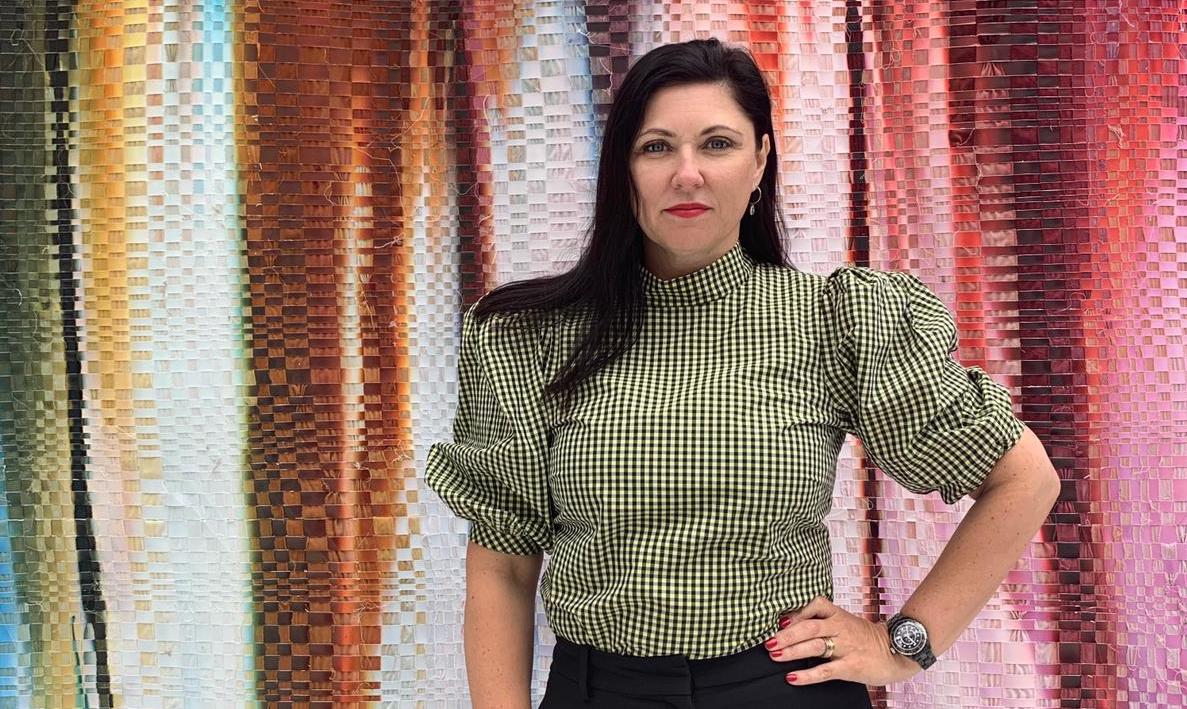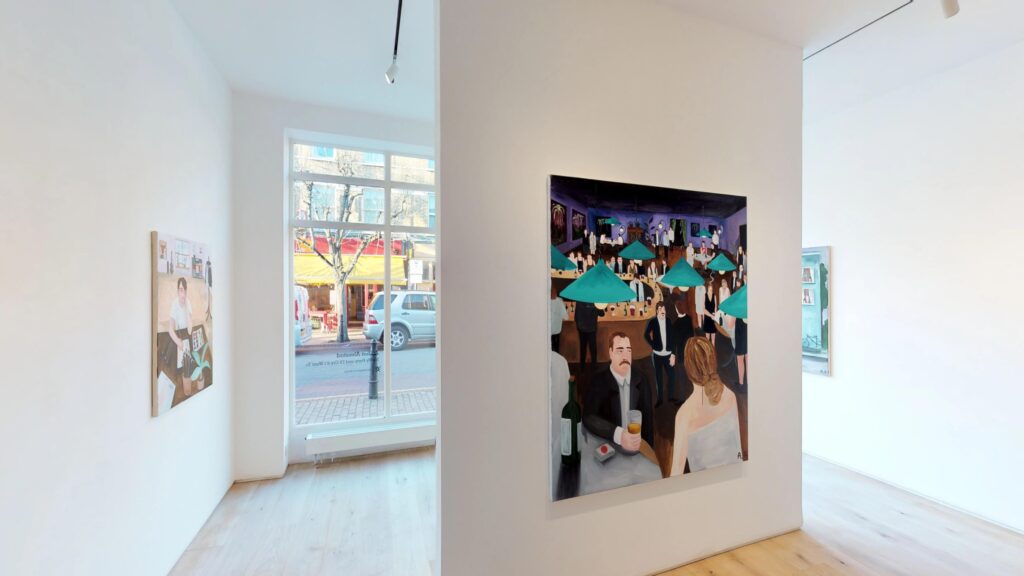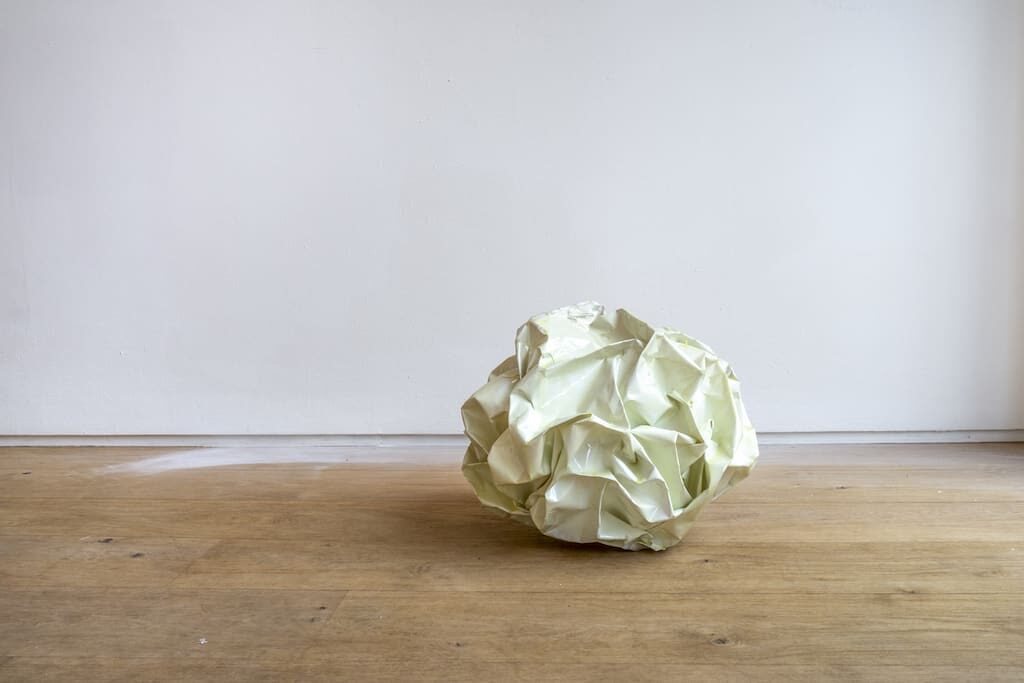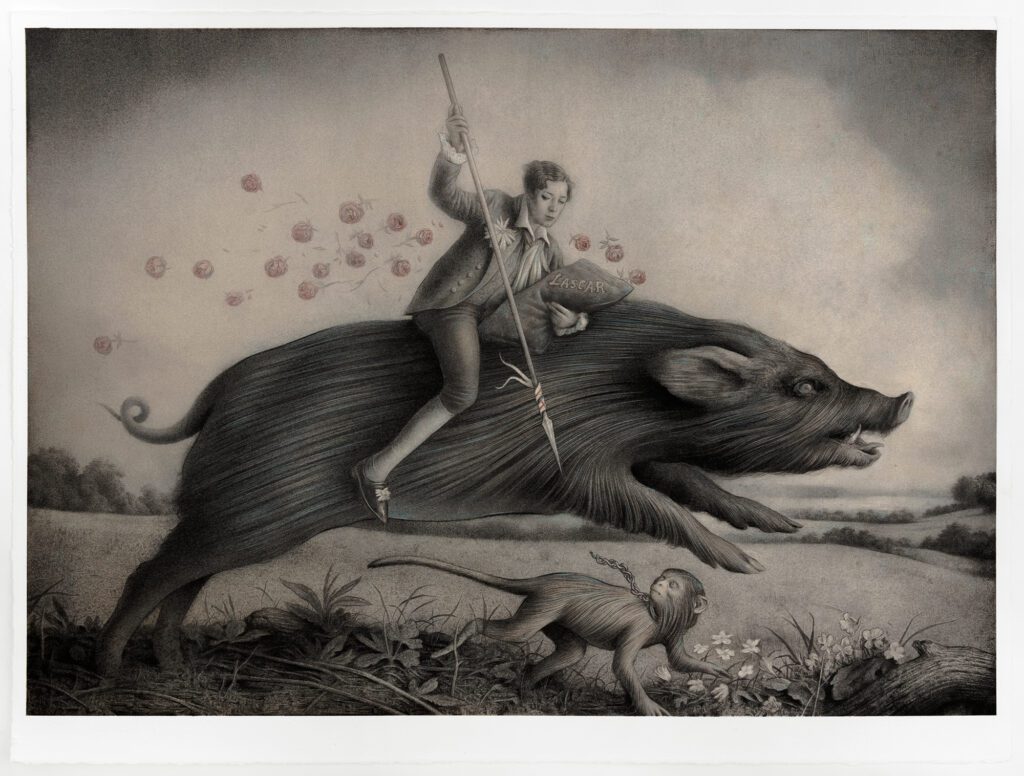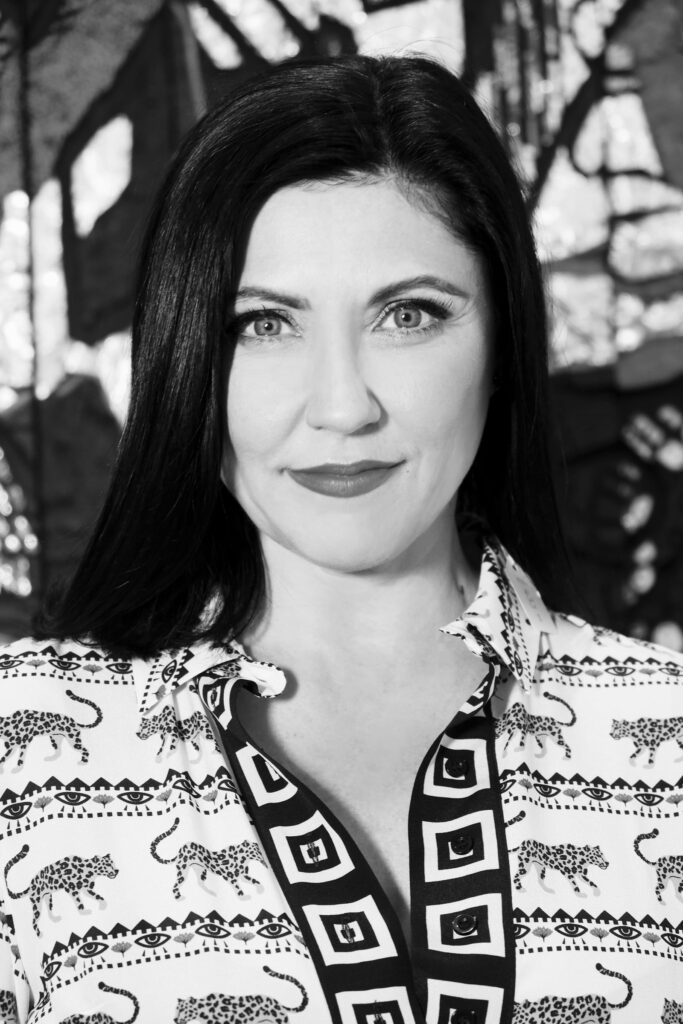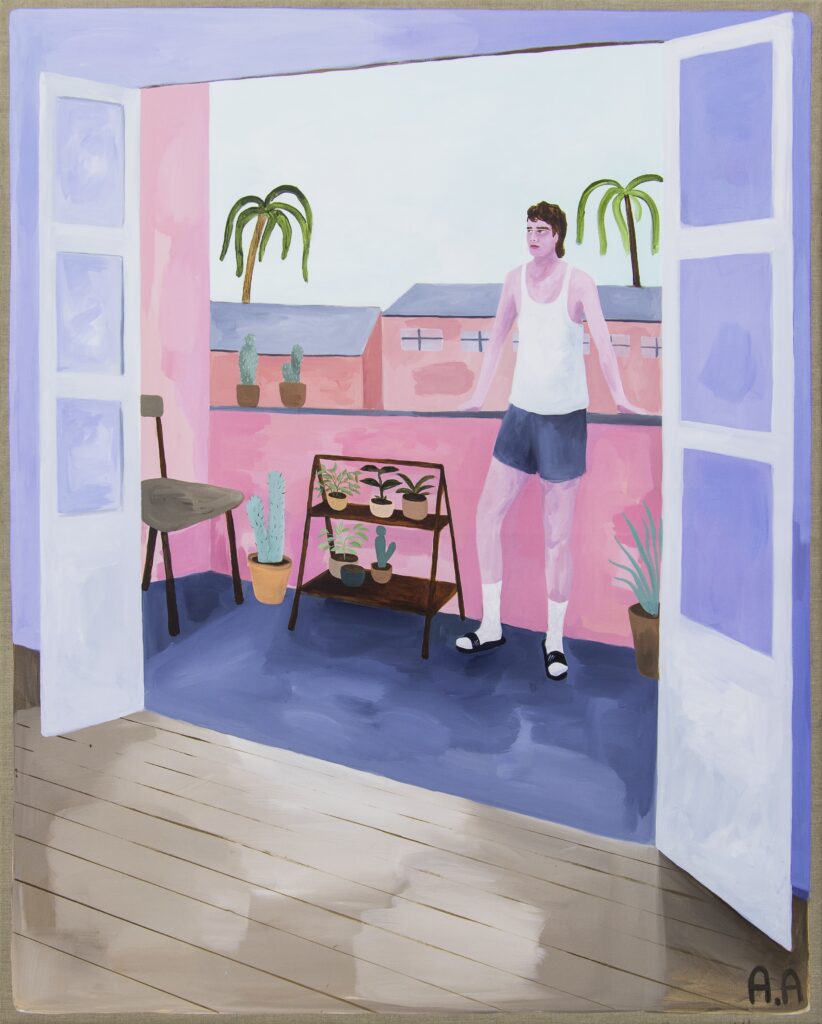Following several years moving around the world, Norwegian gallerist Kristin Hjellegjerde and her family settled in London, where she opened her first exhibition space in Wandsworth in 2012.
Today she has established herself as one of the most successful gallerists on the international art scene, with a second UK gallery (in London Bridge), one in Berlin, and a newly-established summer venue in a former shrimp factory in the Norwegian fishing village of Nevlunghavn.
With a stable of 35 international artists, and a distinctive programme for each of her galleries, Hjellegjerde is busier than ever, unflustered by the global pandemic. Norwegian Arts spoke to Hjellegjerde about her familial approach to exhibiting art, what she looks for in artists, and how she has maintained momentum in trying times.
What is it like being a Norwegian gallerist based in London?
As I have galleries in Berlin and Norway as well, I travel a lot so that I’m able to be present for the openings and events around each exhibition. This gives me the opportunity to work in a way I don’t think is possible when you only have a base in the UK.
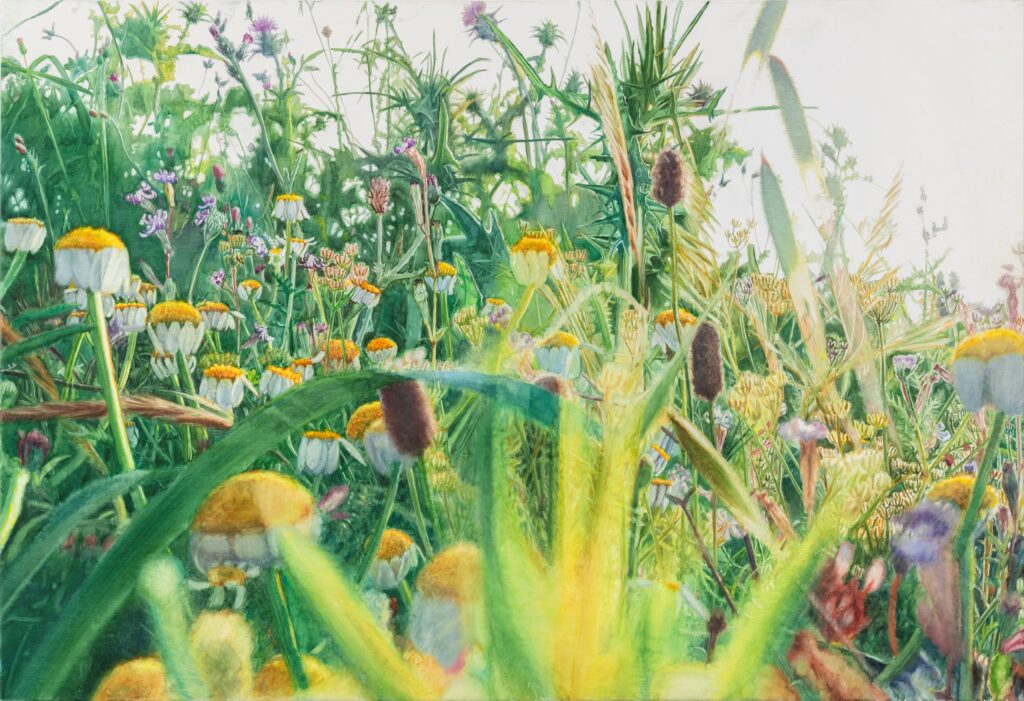
Shufat VIII, 2020, by Vibeke Slyngstad, one of the Norwegian artists represented by Kristin Hjellegjerde
Could you tell me about your background?
I grew up by the fjords on the west coast of Norway in a small town called Sykkylven. I studied literature, criminology and history at the University of Oslo – all courses where you don’t really learn much about business. I thought I was going to be a writer and live all over the world. I moved to Italy for a while, then Bangkok and Singapore, then New York, LA and back to New York again, where my kids were born. And now I’m in London. Everywhere, I searched for art. But it wasn’t a field I thought I would ever be allowed to work in. I did theatre, and all sorts of things. I sold real estate on the Upper West Side in New York for a while, which helped me realise that I was good at selling. I decided I wanted to sell something I was really passionate about, so I took on an art business.
My husband is an architect for Foster + Partners, so we ended up moving back to London after he had finished Hearst Tower. I felt I was too old to go out and start working for someone else, so I took a chance, and I found this beautiful space in Wandsworth, which became my first gallery. I was definitely naïve at the beginning. I have the respect of my artists, and I have the respect of my collectors, but I don’t have an enormous amount of publicity. I think that could be an advantage, though, because I can build everything up quietly.
Your gallery in Berlin is run by your sister. What is it like working with a sibling?
Yes, it is run by my German sister. She didn’t want to be in the corporate world anymore, and she liked what I was doing with the gallery programme. It’s wonderful to keep things in the family. In Norway, one of my best friends is running the gallery. I believe in working with people who really care about what we do – this is more important than someone’s CV.
How do you select your artists?
Everything is very personal, we’re a family. They all become close friends. I don’t represent artists who are competitive towards each other, because I make sure they are all different, each with their own unique style. I also try to give each of them solo shows so they all get to shine.
I find new artists by researching online, asking my artists to recommend others, seeing as much work as possible when I travel, and lots of reading. I try to use my instinct as much as possible. I have an incredibly international and diverse group of artists, from Iraq to Ethiopia, and about 50 per cent are female, which is not something I feel the need to boast about.
What is it that you find exciting in a work of art? You seem to like colour?
A lot of the artists I choose exhibit highly positive energy in their work, which a lot of the time brings colour with it. I show mostly drawings, sculptures and paintings – as well as some installation and video. Photography is a rarity in my programme, but I’m bringing in an external curator to do an exhibition of South-East Asian photographers. I’ve done 126 exhibitions without an external curator, but why not?
Was your aim to promote Norwegian art in the UK – and now Berlin – or has the focus always been international?
When I first started, people kept assuming I was a Norwegian gallery. That was never the case, but it’s natural that you get to know the best talent from the place that you’re from. I represent Vibeke Slyngstad, who makes beautifully delicate and detailed paintings. Then there’s Martine Poppe, an abstract painter I would say is Norway’s answer to Agnes Martin. She has a rock ‘n’ roll personality, but her work is poetic and calm. Audun Alvestad is another Norwegian painter, who makes humorous paintings based on ‘snapshots’ from everyday life. He has a solo show at our Berlin gallery right now. Then I have Sverre Malling, who makes drawings, which are very hard to come by. We have a solo exhibition coming up with him in London in January.
How have you been affected by Covid-19 and the lockdown?
We have kept the programme going throughout. Instead of physical openings, we have focused on documenting the shows through photographs, 3D tours, viewing rooms and virtual openings. We have been communicating with our technicians remotely. By keeping the programme going, we have also managed to keep the momentum going, which has helped our collectors keep up their interest. When it comes to a crisis like this, I think it’s extremely important to try your best to constantly come up with new solutions.
Tell me about your new Norwegian summer-only gallery at “Rekefabrikken” (The Shrimp Factory) in Nevlunghavn?
I’ve been dreaming of doing something similar to what the DESTE Foundation is doing on the Greek Island of Hydra, where they fixed up an old slaughterhouse and now put on shows by big-name artists, such as Kiki Smith and Jeff Koons. They also only do one show a year, have visitors, collectors and journalists coming from all over the world, and arrange beautiful dinner events and other social gatherings. I thought: ‘I can do that in Norway!’
Many of my collectors and friends have never visited Norway. Unfortunately, this year, I couldn’t invite them. I had booked out a hotel, but ended up inviting my friends from Oslo instead and we had a fantastic weekend celebrating Moment 2.0, a brilliant solo show by Ethiopian artist Wendimagegn Belete. I hired Mathias Eick, a well-known trumpet player from Oslo, and we had an Ethiopian coffee ceremony.
I think it was a blessing to have a soft opening, and not to come in as a ‘foreigner’, with 50 international collectors suddenly showing up in this small community. I’ve already booked the hotel again for next year. It will be a yearly midsummer night’s opening event, and a way for me to gather my family and friends. I’m so busy I need to create a gallery to see my family!
For more information visit: kristinhjellegjerde.com
Top photo: Portrait of Kristin Hjellegjerde, 2020 (Photo: Hedvig Liestøl)

